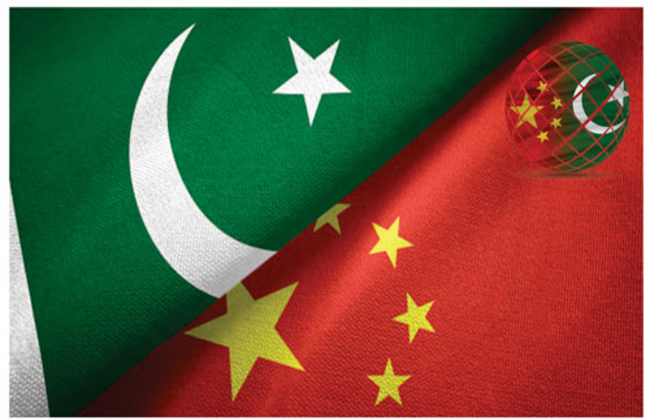CPEC 10Y: Myth vs reality
SINCE its inception on 5 July 2013 as part of BRI, CPEC has emerged as a positive force to transform the patterns of growth and economic security in the region. It has deepened the historical all-weather friendship of China and Pakistan. During a decade of CPEC, we have observed diverse views about myth vs reality due to which geo-political turbulence was quite visible and remained a big national security concern considering the fifth-generation warfare imposed upon Pakistan by inimical forces working against wishes of Pakistan. This decade has seen China become the biggest source of investment, loans and grants for, and the largest trading partner of Pakistan. CPEC’s vision has now become a reality and is heralding a new era of economic prosperity and growth.
Today, despite negative propaganda, Pakistan is successful in propagating the CPEC agenda with a consistent effort in a subtle manner. Although there remained several challenges and controversies, work on CPEC projects continued which can be witnessed from the track record of initiatives and various activities carried out since its inception. Here, I have observed that the Government of Pakistan is fully aware of security needs and is providing essential support to its defence and para-military forces to safeguard the maritime component of CPEC which is of paramount significance for revival of the remarkable Silk Route trade history which has transcended various races, cultures and religions. It is needless to say that armed forces, para-military forces and public sector institutions of Pakistan are also fully cognizant of their responsibilities, and stand ready and committed in fulfilling them, at all times.
From the middle of June 2023 to the end of July 2023, the international community has seen CPEC10Y celebrations through various activities, particularly held in China and Pakistan. Indeed, both nations have showcased full determination which is very much visible in the shape of active engagement and contribution of all stakeholders. In this context, I appreciate the efforts of the CPEC Secretariat at the Ministry of Planning Development and Special Initiative (MoPD&SI) and Embassy of the People Republic of China for planning and observing a very good programme with a series of activities carried out by different stakeholders in Pakistan.
The most significant activities include an international conference on ‘Decade of CPEC & BRI: From Vision to Reality’ – held at Islamabad Serena Hotel from 24 to 25 July 2023, and another international seminar titled ‘CPEC – The Road to Prosperity and Growth Amidst Challenges’ – collectively organized by the National Institute of Maritime Affairs (NIMA) and Pak-China Study & Research Centre (PCSRC), Bahria University, Islamabad. These events have raised the stature of national celebrations through providing a platform to all kind of stakeholders for academic discourse to exchange ideas and insight about opportunities, challenges and practical solutions to maximize the benefits of CPEC through enhanced cooperation, sustainable development and inclusive growth in the subsequent phase of CPEC.
It has been observed that CPEC10Y celebrations have revitalized the resolve to grow further with a faster speed and translate CPEC endeavours into peace, prosperity and sustainable development of both partners, the region and beyond. It offers both countries an opportunity to review progress achieved so far and improve future course of action to derive long-term mutual benefits.
Over the last 10 years, CPEC has made outstanding contribution to Pakistan’s economic and social development. The project has provided employment opportunities to a big population across the country besides speeding up the pace of development in various sectors of the national economy. Since CPEC is a long-term initiative, so far key milestones of basic or readiness needs for different project components have been achieved which are important in the context of energy, transport infrastructure, industrial cooperation/Special Economic Zones (SEZs), social sector, Gwadar port and city development.
On one hand CPEC is the true manifestation of regional connectivity and its achievements have attracted worldwide attention. While on the other side there is a need to boost progress by addressing outstanding concerns through an inclusive and sustainable development approach. Now, it is time to focus more on bilateral cooperation for the development of export- oriented industrial and agriculture segments as well as ‘maritime component of CPEC’ by integrating the conceptual framework of Blue Economy. Considering the apprehensions about the sustainability, transparency and accountability of CPEC projects, the Blue Economy narrative offers a very good avenue to maximize the benefits of CPEC by overcoming these concerns in a more systematic and professional manner.
So far, the comparative analysis of CPEC projects depicts less progress on operational aspects of the Gwadar port. We do understand that the provision of allied facilities was quite challenging and now some of these aspects are addressed to a reasonable extent. It is very important that, to early harvest the real potential of CPEC, efforts are needed to energize its maritime component for which focused attention is needed regarding the required extension work for operationalization of Gwadar port as transit and transhipment hub.
In addition, it is time to shift the gravity of the CPEC related activities at Gwadar and initiate work for sustainable development of maritime tourism, marine fisheries and aquaculture, ship building & maintenance, shipping, ferry sector and the value chains involved. Considering the future scope, Pakistan and China can establish a ‘Joint Shipping Line’ with its hub at Gwadar. Federal and provincial governments need to engage the private sector for maritime tourism including the water sports and boat safari related activities alongside the Pakistani coast. The ferry sector can do wonders through domestic and international operations particularly in the Gulf region including Hajj & Umrah Services, if the private sector is attracted through incentive based enabling policies and ‘one-window’ procedures.


0 Comments:
Leave a Reply